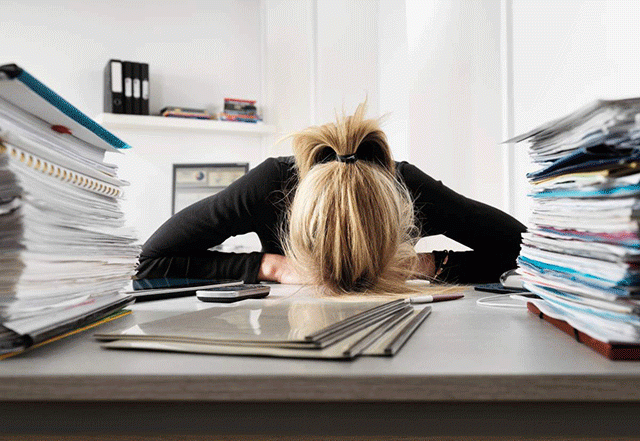
People should first work toward standing or doing light activity like walking for two hours per day, the panel said in a consensus statement.
 PHOTO: IMGBUDDY
PHOTO: IMGBUDDY The panel was commissioned by Public Health England and the company Active Working CIC, which owns the Get Britain Standing campaign.
Too much sitting has been linked to poor health outcomes over the past several years. Still, no one had set a baseline for just how much time workers should spend on their feet each day, said Gavin Bradley of Active Working CIC in Teddington, U.K.
 PHOTO: CHIROPRACTIC.ON
PHOTO: CHIROPRACTIC.ON“People weren’t prepared to say what we said, which is how many hours specifically,” Gavin told Reuters Health.
The specific recommendation may change as more evidence emerges, but this two- to four-hours-per-day guidance is a good starting point, he said.
U.K. office workers spend as much as 75% of their time at work sitting down, the experts said June 1 in the British Journal of Sports Medicine.
Similarly to prolonged periods of sitting, long periods of standing should be avoided, according to the panel, which included experts from several universities and research institutes in the U.K., U.S. and Australia.
 PHOTO: MEDICALNEWSTODAY
PHOTO: MEDICALNEWSTODAYEmployers may help their employees achieve the two to four hours of standing or light activity by changing how and when people can take breaks that involve standing and movement, or by adopting desk designs and technologies that allow people to perform their work more easily in a standing position, the authors write.
“There is good evidence now that too much sitting is associated with generally poorer health outcomes in the long run,” including poor bone health, cardiovascular diseases, diabetes and certain cancers, said Dr. Sebastien Chastin of Glasgow Caledonian University in the U.K.
 PHOTO: REDORBIT
PHOTO: REDORBIT Sitting seems to be one of the factors contributing to chronic disease, Dr. Sebastien, who was not part of the new statement, told Reuters Health by email.
“For the last 20 to 30 years the emphasis has been to engage in more ‘purposeful’ exercise,” said Paddy Dempsey of the physical activity laboratory at the Baker IDI Heart and Diabetes Institute in Melbourne, Australia.
“Exercise is great for health and we will all continue to advocate for it, but the sad reality is that it hasn’t gotten us all that far at the population level as many are still not engaging in purposeful exercise, and are now sitting increasingly more,” said Paddy, who was not part of the new statement.

PHOTO: GYMFLOW
Breaks in sedentary time should be an additional measure on top of purposeful exercise, he said by email.
“Research suggests that individuals who are not gaining the benefits of a physically active lifestyle may at least mitigate some of the health hazards associated with physical inactivity by standing more during the day,” said Dr. Lee Smith of the Health Behavior Research Center at University College London. He was also not part of the new statement.
“Based on the evidence we have to date, the approximation of two hours increasing to at least four seems reasonable enough,” Paddy told Reuters Health.
We may not be able to pin down the optimal standing time for health effects yet, but these suggested figures seem to be about right, and achievable, Chastin said.
Some companies have already started to address the sitting problem, while others have yet to begin, and the situation can vary greatly by country, Gavin said. A similar Get America Standing campaign launches this week.
Education and public campaigns like these may lead to behavior change, but “it’s going to take us 20 years to get where we need to be,” he said.
That’s going to require a cultural shift toward understanding and accepting standing phone calls, walking meetings and going over to a colleague’s desk to talk instead of emailing them, Gavin said.








1731317620-0/Untitled-design-(9)1731317620-0-270x192.webp)









COMMENTS
Comments are moderated and generally will be posted if they are on-topic and not abusive.
For more information, please see our Comments FAQ